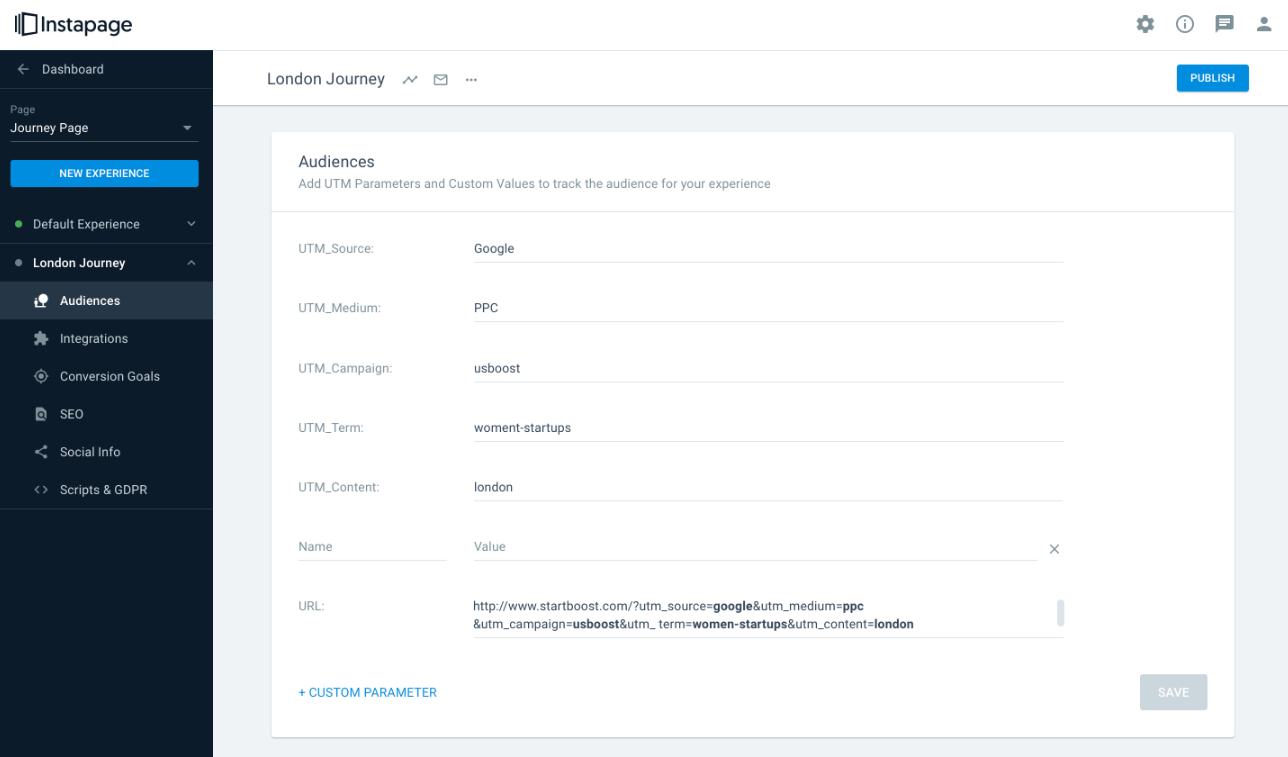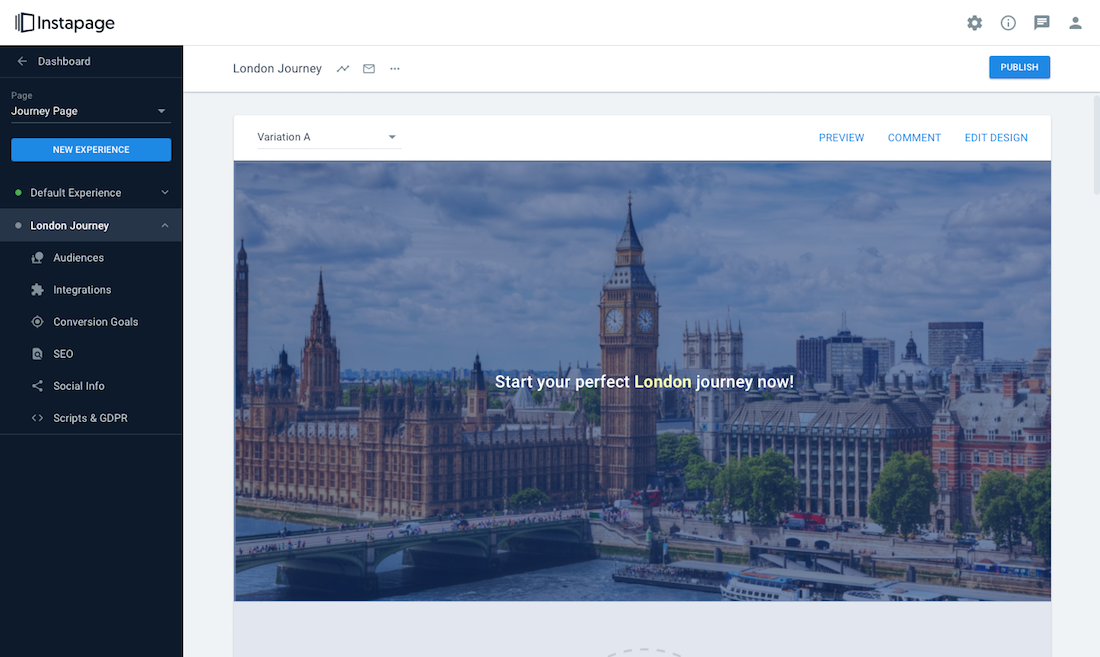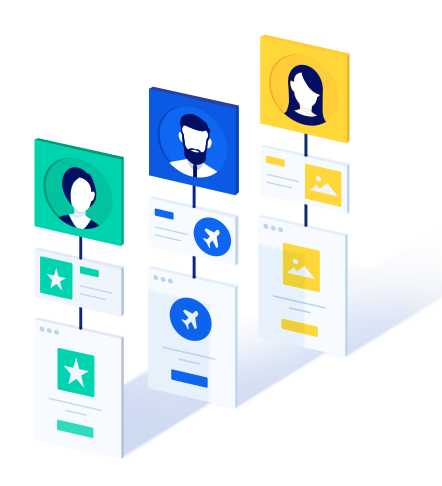From product development to marketing, there’s only one thing that should be guiding your long-term strategy: knowledge of your customer.
Not any customer, though. Your “ideal customer” — a term that means something different to everyone. To determine what it means to you, you’ll need an ideal customer profile.
What is an ideal customer profile?
An ideal customer profile is a hypothetical representation of an ideal customer. While hypothetical, this representation is formed with a combination of real data that takes into account both your business (size, budget, sales cycle, industry) and your customer’s (title, industry, budget, age, gender, behavior). This data is clear and measurable.
Ideal customer profiles are used to help businesses narrow their targeting from a broad audience to a single account. This single account, however, is highly dependant on the business that is creating the ICP. A B2C business may use gender, age, income, and marital status to identify their ideal customer profile, while A B2B business favors firmographic data like size, industry, and budget.
Buyer persona vs. ideal customer profile vs. target audience
If you’re thinking ideal customer profiles sound a lot like buyer personas and target audiences, you’re not far off. There’s some overlap between each of these, and they all share the same foundational purpose: help businesses identify their ideal customer. Here’s where they differ:
- Ideal customer profiles are hypothetical representations of customers based on data like age, budget, industry, position, behavior, gender, etc. This is the “who” you are selling to.
- Buyer personas are hypothetical representations of customers based on qualitative data points: motivation, goals, fears, etc. These help you define the “how” you sell to your ideal customer profiles.
- Target audiences are hypothetical representations of groups of people you want to market to. These people may be buyers, but they may be broader. Target audiences can include influencers, partners, companies, and anyone else directly or indirectly related to the buyers you want to reach.
At different stages, each of these identifiers is valuable for determining who to sell your product to, and how. Initially, it’s valuable to know which groups may need your product, and who they associate with. These are target audiences.
From there, the ideal customer profile is an even narrower look at these people based on specific traits, roles, behaviors, and more. In the B2B sector — and especially for account-based marketers — ideal customer profiles will also include firmographic data about the business at which your ideal customers work.
For example, your ideal customer may be ecommerce digital advertising managers with a budget over $1 million. This includes data about the decision-maker within an account, but also the account itself: ecommerce businesses with a budget over $1 million.
Then, according to Propeller, creating buyer personas will help you “get inside the heads” of your potential customers. For this reason, the process has also been called “empathy mapping.” Where target audience data and ICP parameters are measurable, buyer personas help you determine why your product is a fit for a particular customer. What are their pain points? What will your product help them do? What are their goals?
How to create an ideal customer profile
Identifying your ideal customer sounds like a daunting task, but only if you’re overthinking. You likely already have a process for determining whether a customer is worth working with or not. Sangram Vajre, CEO of Terminus, elaborates:
Think about it this way: most sales processes start with a single point of contact. This person is potentially a good fit for your business, and you determine whether they're a good fit using certain criteria, right? That list of criteria is what will help you build an ideal customer profile.
If you have enough data, a great place to start is backward from the goal you’re trying to achieve. In this case, that means determining who your best customers are.
These aren’t merely people who buy your product, but ones who rave about it, recommend it to their friends, and purchase upgrades and add-ons.
However, as Cathy Patalas from Woodpecker points out, settling on a definition of “ideal” can be difficult depending on who’s doing it…
- For their marketing team: “ideal” meant a client who not only got value from the product, but passionate about advocating on its behalf. It also meant a client who was open to marketing cooperation, and one that was located in Western Europe because that’s where their target audience is.
- For their sales team: “ideal” meant a client that was eager to buy the product so the sales team didn’t have to overuse time and resources to persuade them. They should like all current features and have no sales objections.
- For their support and product team: “ideal” meant a client that was tech-savvy and able to solve technical issues themselves. They should know how to send email and understand the tool’s features and some technicalities of the process. They should be patient, friendly, and located in the same time zone so requests come at reasonable hours. They should be satisfied with the features of the product, and those features should fit well in their marketing strategy.
To arrive at a common definition of “ideal customer,” they used Lincoln Murphy’s framework built on 7 categories:
- Ready: They have a problem they need solved or an opportunity to take advantage of, and they know it. This problem/opportunity is acute and there’s a sense of urgency that can be capitalized on.
- Willing: They’re ready to solve their problem by taking action.
- Able: They have the budget and authority to solve their problem.
- Success Potential: They will have the best possible chance of success in the immediate future using your solution. This is an in-depth category. Read more here.
- Acquisition Efficiency: They will be easy to acquire and cost-effective to acquire, taking into account lifetime value, onboarding and support costs, and buying cycle.
- Ascension Potential: They will be likely to purchase again from you, because their success will demand it. This can be a cross-sale or upsell.
- Advocacy Potential: They will advocate on your behalf — refer customers to you, provide testimonials, spread product awareness via use-base triggers.
With these in mind, working backwards to identify your ideal customers can be a much more organized and effective process. That is, only if they’re combined with real data.
When, for example, is a customer “ready”? What does that look like to your business in a measurable way? Is it signup for a demo? A call to the sales team?
These definitions are crucial, as your team has to be able to identify, consistently and easily, the right people to customize your content for. This is the ultimate goal of determining your ideal customer profile: personalization.
Once you’ve identified your ICP, you can target your ads to people that meet the definitions of ready, willing, able, etc. Then, you can match those ads to post-click landing pages with tools like UTM parameters, and continually learn more about your ideal customer with heat maps and A/B testing.


Why ideal customer profiles are valuable: 2 examples
New Breed
Ideal customer profiles can be just as helpful for deciding who not to work with as who to work with. In a blog post for customer acquisition agency, New Breed, Guido Bartolacci shares a story about a customer profile they labeled “Startup Sam:”
This type of customer was (and is) highly interested in working with us, but their lack of budget made them difficult to sell to. With a high cost of acquisition, we hoped to recoup that by renewing with them over a long period of time, but the average deal was small, short and provided little value to our company.
Once we started noticing this pattern, we disincentivized our sales reps from working with Startup Sams and instead referred them to other resources that might help them solve their challenges until they reached our target profile. This helped us increase our win rates, average deal size, and lifetime customer value.
This customer data analysis, combined with the disincentivization of sales reps, ended New Breed’s relationship with Startup Sams in 2017. The results were proof they made the right decision:
- Over the course of 2017, New Breed saw an 83% increase in their average deal size.
- The first full year of not selling to Startup Sams (2018), they experienced another 30% increase in average deal size from the previous year.
- In just the first few months of 2019, their average deal size has been 152% higher than in 2016.
HubSpot
For years, HubSpot debated its target ICP: Was it…
- Owner Ollie: A small business owner with less than 10 employees and no full-time marketer.
Or…
- Mary Marketer: A marketing manager who worked in a company between 10 and 1000 employees.
The pricing and support requirements were different for each, and by not deciding, they had to focus on both. Their efforts were diluted among two ideal customers, and that meant compromise after compromise. Despite there being support for each, the team picked Mary in 2012, says Brian Halligan. This is what he had to say about the results:
- By picking Mary, our marketers could now build content that attracted her and stopped watering our blog (and other assets) down with business owner content.
- By picking Mary, our sales reps only were rotated leads from companies between 10 and 1,000 employees, honed their value proposition on how to help Mary grow, and largely forgot about Ollie.
- By picking Mary, our product folks could laser focus on delighting Mary and stop splitting the baby on the UI and feature set they were building for both. If someone suggested an Ollie feature, they’d simply say “no” and move on — no more hand wringing.
- By picking Mary, our pricing folks could get more creative.
- By picking Mary, our service folks could afford to do more servicing and delighting.
Create your ideal customer profile
Ideal customer profiles are a must-have, and they do more than identify your target customers. They also allow you to align marketing and sales around a clear audience definition, which will help keep messaging consistent throughout each campaign.
Additionally, as you collect feedback from customers on product successes and failures, over time your ICP will change, and it can inform improvements in product service and design.
Learn more about how to reach your ideal customers using ad-to-page personalization, with the Instapage Personalization solution.

Get a Personalization Demo
See how easy it is to create unique experiences for any audience you target.
